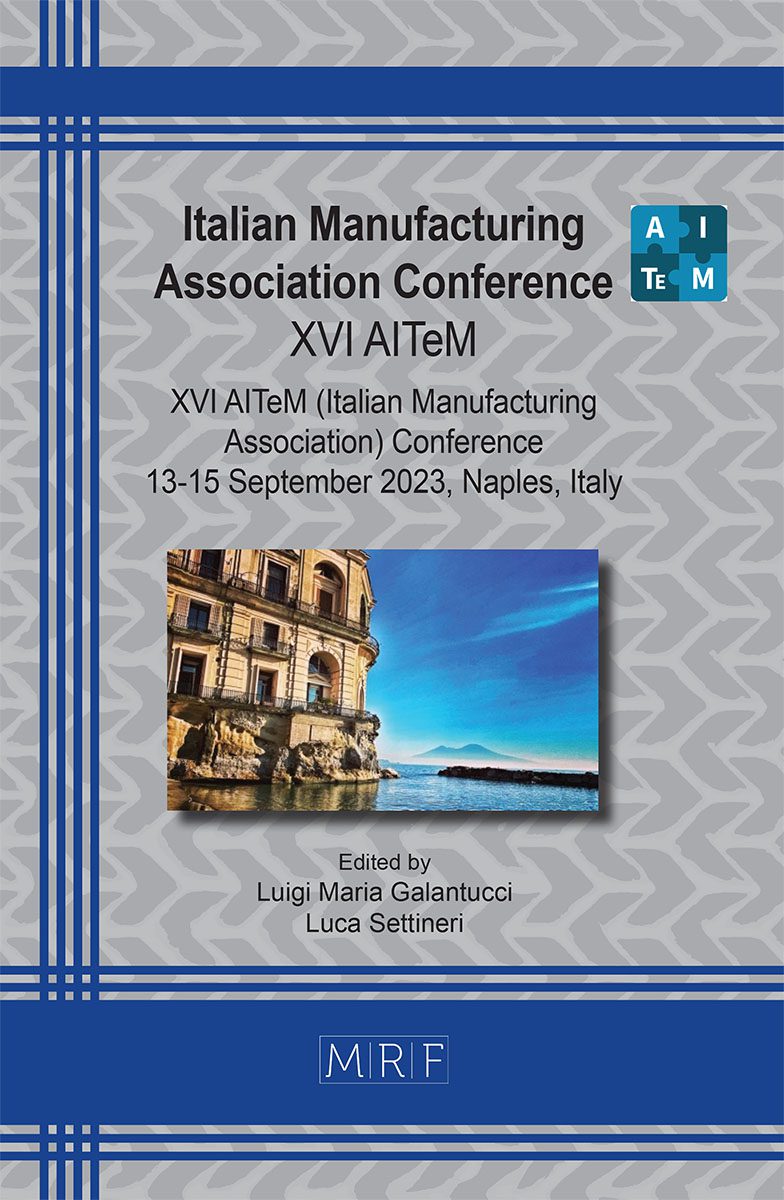Exploiting laser-direct energy deposition for customized components: H13 and 316L functionally graded materials
Alessia Teresa Silvestri, Paolo Bosetti, Matteo Perini, Antonino Squillace
This Article has been withdrawn by the authors
Abstract. Among the Additive Manufacturing processes, one of the most intriguing technologies to produce customized components is Laser-Direct Energy Deposition (L-DED), which uses a focused laser beam to fuse metallic powders as they are deposited onto a substrate. L-DED can be used to manufacture new parts, apply coatings, repair damaged components, and produce items with tailored compositions and unique properties. The latter are called Functionally Graded Materials (FGMs), a new class of high-performing materials that is gaining great attention in both industry and academia due to their potential, for example, in the field of tooling, offering the possibility to repair damaged molds instead of replacing them. This research aims to enrich the landscape of L-DED production of FGM components with custom and tailored properties. H13 tool steel and 316L stainless steel are suitable for these purposes and are the materials used. Samples were designed, printed and characterized, obtaining satisfactory results.
Keywords
Direct Energy Deposition (DED), Steel, FGM
Published online 9/5/2023, 9 pages
Copyright © 2023 by the author(s)
Published under license by Materials Research Forum LLC., Millersville PA, USA
Citation: Alessia Teresa Silvestri, Paolo Bosetti, Matteo Perini, Antonino Squillace, Exploiting laser-direct energy deposition for customized components: H13 and 316L functionally graded materials, Materials Research Proceedings, Vol. 35, pp 118-126, 2023
DOI: https://doi.org/10.21741/9781644902714-15
The article was published as article 15 of the book Italian Manufacturing Association Conference
![]() Content from this work may be used under the terms of the Creative Commons Attribution 3.0 license. Any further distribution of this work must maintain attribution to the author(s) and the title of the work, journal citation and DOI.
Content from this work may be used under the terms of the Creative Commons Attribution 3.0 license. Any further distribution of this work must maintain attribution to the author(s) and the title of the work, journal citation and DOI.
References
[1] F. Hengsbach et al., “Inline additively manufactured functionally graded multi-materials: microstructural and mechanical characterization of 316L parts with H13 layers,” Progress in Additive Manufacturing, 2018. https://doi.org/10.1007/s40964-018-0044-4
[2] A. Reichardt et al., “Advances in additive manufacturing of metal-based functionally graded materials,” International Materials Reviews, 2021. https://doi.org/10.1080/09506608.2019.1709354
[3] I. M. El-Galy, B. I. Saleh, and M. H. Ahmed, “Functionally graded materials classifications and development trends from industrial point of view,” SN Applied Sciences. 2019. https://doi.org/10.1007/s42452-019-1413-4
[4] W. Zhang, M. Soshi, and K. Yamazaki, “Development of an additive and subtractive hybrid manufacturing process planning strategy of planar surface for productivity and geometric accuracy,” International Journal of Advanced Manufacturing Technology, vol. 109, no. 5–6, pp. 1479–1491, 2020. https://doi.org/10.1007/s00170-020-05733-9
[5] I. Gibson, D. Rosen, and B. Stucker, “Directed Energy Deposition Processes,” 2015, pp. 245–268. https://doi.org/10.1007/978-1-4939-2113-3_10
[6] A. T. Silvestri, S. Amirabdollahian, M. Perini, P. Bosetti, and A. Squillace, “Direct Laser Deposition for Tailored Structure,” ESAFORM 2021, 2021. https://doi.org/10.25518/esaform21.4124
[7] M. Ostolaza, J. I. Arrizubieta, A. Lamikiz, and M. Cortina, “Functionally graded AISI 316L and AISI H13 manufactured by L-DED for die and mould applications,” Applied Sciences (Switzerland), 2021. https://doi.org/10.3390/app11020771
[8] T. Materials, ASM Handbook, Volume 9, Metallography and Microstructures. 2004.
[9] ASTM E384 – 17, “Standard Test Method for Microindentation Hardness of Materials, ASTM International, West Conshohocken, PA,” Book of ASTM Standards, vol. 03.01, 2017.
[10] ASTM INTERNATIONAL, “Standard Test Methods for Flexural Properties of Unreinforced and Reinforced Plastics and Electrical Insulating Materials. D790,” Annual Book of ASTM Standards, pp. 1–12, 2002 https://doi.org/ 10.1520/D0790-17.2
[11] T. DebRoy et al., “Additive manufacturing of metallic components – Process, structure and properties,” Progress in Materials Science, vol. 92. 2018. https://doi.org/10.1016/j.pmatsci.2017.10.001
[12] G. Roberts, G. Krauss, and R. Kennedy, “Tool Steels: 5th Edition,” Book, 1998.































